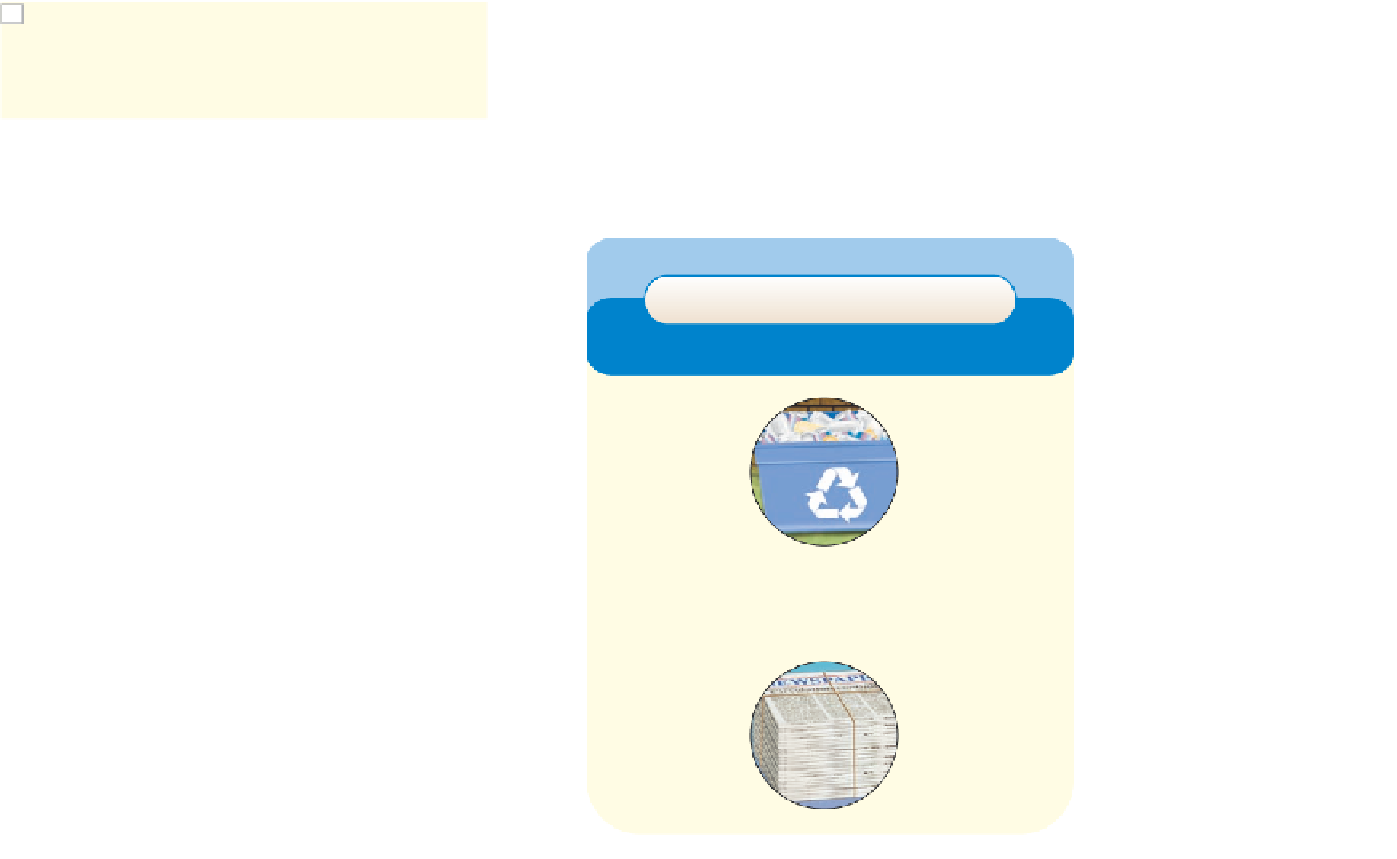Environmental Engineering Reference
In-Depth Information
glass, paper, metals, certain types of plastics, and com-
postable materials. These segregated wastes are then
collected and sold to scrap dealers, compost plants,
and manufacturers.
The
source separation
approach offers several ad-
vantages over the centralized approach. It produces
much less air and water pollution and has low start-up
costs and moderate operating costs. It also saves more
energy, provides more jobs per unit of material, and
yields cleaner and usually more valuable recyclables.
In addition, it educates people about the need for
waste reduction, reuse, and recycling.
To promote separation of wastes for recycling,
many communities have implemented a
pay-as-you-
throw (PAUT)
waste collection system. Households
and businesses are charged according to the amount
of mixed waste picked up but not for collection of ma-
terials separated for recycling. Does your city use this
approach?
Cargill Dow is manufacturing biodegradable and
recyclable plastic containers made from a polymer
called polyactide (ACT), made from the sugar in corn
syrup. Instead of being sent to landfills, these bioplas-
tic containers could be composted to produce a soil
conditioner.
Toyota, the world's second-leading automaker, is
investing $38 billion in a process that makes plastics
from plants. By 2020, it expects to control two-thirds of
the world's supply of such bioplastics.
Trade-Offs: Advantages and Disadvantages
of Recycling
Recycling materials such as paper and metals has
both environmental and economic benefits.
Figure 17-8 lists the advantages and disadvantages of
recycling. Whether recycling makes economic sense
depends on how you look at the economic and envi-
ronmental benefits and costs of recycling. Critics say
recycling does not make sense if it costs more to recycle
materials than to send them to a landfill or incinerator.
They also point out that many areas are not running
out of landfill space, so recycling may be unnecessary.
Proponents of recycling concede that this may
make economic sense for valuable and easy-to-recycle
materials such as aluminum, paper, and steel, but not
x
H
OW
W
OULD
Y
OU
V
OTE
?
Should households and busi-
nesses be charged for the amount of mixed waste picked
up but not charged for pickup of materials separated for re-
cycling? Cast your vote online at http://biology.brookscole
.com/miller11.
Science and Economics Case Study: Problems
with Recycling Plastics
Recycling many plastics is chemically and
economically difficult.
Many plastic containers and other items are thrown
away and end up as litter on roadsides and beaches.
Could more widespread recycling of plastics reduce
this unsightly problem?
Currently, only 10% by weight of all plastic wastes
in the United States is recycled, for three reasons.
First,
many plastics are challenging to isolate from other
wastes because the various resins used to make them
are often difficult to identify, and some plastics are
composites of different resins. Most plastics also con-
tain stabilizers and other chemicals that must be re-
moved before recycling.
Second,
recovering individual plastic resins does
not yield much material because only small amounts
of any given resin are used per product.
Third,
the inflation-adjusted price of oil used to
produce petrochemicals for making plastic resins is so
low that the cost of virgin plastic resins is much lower
than that of recycled resins. An exception is PET, used
mostly in plastic soft-drink bottles.
Thus, mandating that plastic products contain a
certain amount of recycled plastic resins is unlikely to
work. It could also hinder the use of recycled plastics
in reducing the resource content and weight of many
items, such as plastic bags and bottles.
T rade-Offs
Recycling
Advantages
Disadvantages
Reduces air and
water pollution
Does not save
landfill space in
areas with ample
land
Saves energy
Reduces mineral
demand
May lose money for
items such as glass
and most plastics
Reduces greenhouse
gas emissions
Reduces solid waste
disposal
Reduces profits
from landfills and
incinerators
Helps protect biodiversity
Can save money
for items such as
paper, metals,
and some plastics
Source separation
is inconvenient for
some people
Important part of
economy
Figure 17-8
Trade-offs:
advantages and disadvantages of
recycling solid waste.
Critical thinking: pick the single advan-
tage and disadvantage that you think are the most important.





